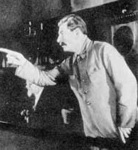Surviving the matrix: 5 common leadership pitfalls and how to avoid them.

by Jamie Zawinski (Wikimedia Commons)
Jo Owen, in his excellent How to Lead: what you actually need to do to manage, lead and succeed has a wonderfully concise and vivid section on the ‘pitfalls of survival’ for leaders. This post outlines these and gives some advice as to how to avoid them. 🙂
Owen calls the middle management of an organization ‘the matrix’. It can be an uncomfortable and difficult place from which to emerge, he says. The five most common pitfalls of survival are:
- The expert in the matrix
- The cave dweller
- The politician
- The boy scout
- The autocrat
The expert in the matrix
The expert in the matrix has been promoted because of their technical competency. On becoming a leader they are out of their comfort zone and therefore lean on their exceptional technical skills. They are likely to demand almost impossibly high standards from their subordinates leading to friction and discontent.
The cave dweller
Cave dwellers try to avoid the matrix as much as possible by hiding in their ‘cave’ of pseudo-certainty. In an attempt to recreate the security they felt lower down the organization they become more territorial and less valuable to the organization. These, says Owen, are likely to be the first to go in any organizational ‘rationalisation’.
The politician
Coming across as rather too enthusiastic about ‘learning the dark arts of the matrix,’ the politician works hard to cultivate a power network. They are constantly on the lookout for new initiatives and seek a position in relation to them. Politicians seek to be close enough to projects to be able to claim a stake in them if successful whilst being able to distance themselves from projects that fail or are discredited. After a while politicians are seen for their true colours and are ignored.
The boy scout
The opposite to the politician is the boy scout. They think that by working hard and delivering results they will automatically receive recognition and promotion. In practice, however, they got ‘lost in the matrix.’ Boy scouts need to stake their claim and show that they are leading and delivering.
The autocrat
Autocrats act as if they are already higher than they actually are in the organizational hierarchy. Whilst they talk about the importance of being a team player, in reality they are chiefly concerned with people being loyal to them. If they perform well, autocrats can succeed and are promoted. If not, they become irritating and a burden to their colleagues.
The path through the matrix
So how do middle managers be successful in and/or find their way out of the matrix? Owen believes this comes back to the ‘three and a half Ps’ that he outlines at the start of the book:
- People – focus not only on those you have direct formal control but those ou can motivate and coach. These widens your circle of influence.
- Professional – model the values needed as a senior leader. One of the best ways to do this, believes Owen, is to chair meetings well.
- Positive – being positive is especially important in the middle of the matrix. Treat ambiguity and change as opportunity instead of risk. Learn how to deal with conflict in your particular context and you will be successful.
- Performance (the half-P) – you need a ‘claim to fame’ to emerge from the matrix. Show that you can deliver exceptional results out of ambiguity and complexity. Actively take on challenge.
Conclusion
I really liked this section of Owen’s book In fact, the whole thing is becoming invaluable to me as I step up from being a an ‘expert in the matrix’ (and ‘boy scout’ at times) to, hopefully, becoming an effectively and successful senior leader! 😀








![Reblog this post [with Zemanta]](http://img.zemanta.com/reblog_e.png?x-id=e1ffa864-b8fb-46c7-9fab-ff7540d1798a)